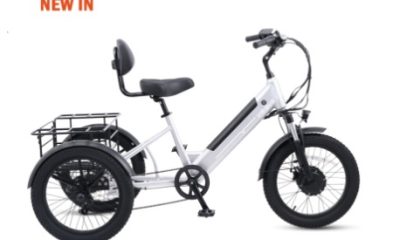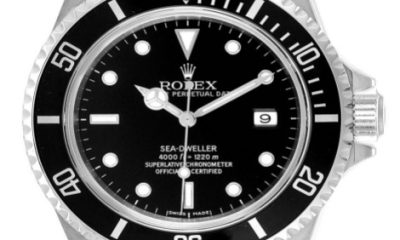Life Style
Apron Maintenance 101: Tips for Cleaning and Caring for Your Chef Apron

As a chef, your apron is an essential tool that not only protects your clothing but also symbolizes your dedication to the culinary craft. But have you ever wondered how to properly clean and care for your trusted culinary companion? In this blog post, we will delve into the world of apron maintenance and provide you with valuable tips to keep chef aprons in top-notch condition.
Proper apron maintenance goes beyond just removing stains and odors. It helps preserve the integrity of the fabric, extends the lifespan of your apron, and ensures optimal hygiene in the kitchen. Whether you’re a seasoned chef or an aspiring home cook, understanding the best practices for cleaning and caring for your chef apron is crucial.
Throughout this article, we’ll cover everything you need to know about apron maintenance. From pre-cleaning preparations and general cleaning guidelines to drying techniques, ironing tips, and specific care instructions for different apron styles and features, we’ve got you covered. We’ll also address common troubleshooting issues and provide suggestions for proper storage.
By following these practical tips and incorporating them into your regular routine, you can maintain the pristine condition of your chef apron, allowing it to serve you faithfully for countless culinary adventures to come.
So, let’s dive into the world of apron maintenance and discover how to keep your chef apron looking and feeling its best!
Pre-Cleaning Preparations
Before diving into the cleaning process, it’s essential to prepare your chef apron properly. Taking a few extra steps before cleaning can make a significant difference in the effectiveness of your cleaning efforts. Here are some pre-cleaning preparations to consider:
Removing Excess Food or Stains:
Before washing your chef apron, it’s crucial to remove any excess food particles or stains. Gently scrape off solid debris using a dull knife or spoon. For liquid stains, blot them with a clean cloth or paper towel to absorb as much as possible. Taking this step helps prevent further staining during the cleaning process.
Checking for Specific Cleaning Instructions
Different chef aprons may come with specific cleaning instructions provided by the manufacturer. It’s essential to check the label or any accompanying documentation for any recommended cleaning methods or precautions. Some aprons may require special care, such as dry cleaning or specific temperature settings, so be sure to follow the manufacturer’s guidelines to avoid any potential damage.
By taking these pre-cleaning preparations, you set the stage for a more successful cleaning process. Removing excess food and stains minimizes the risk of stains setting in permanently during washing, while following specific cleaning instructions ensures that you maintain the integrity of your apron fabric and any additional features or embellishments it may have.
General Cleaning Guidelines
When it comes to cleaning your chef apron, it’s important to follow proper guidelines based on the fabric type, construction, and any specific care instructions provided. Here are some general cleaning guidelines to help you maintain the cleanliness and longevity of your apron:
Washing Methods Based on Fabric Type:
Different fabrics require different cleaning methods. For aprons made of cotton or cotton blends, machine washing is often suitable. However, for delicate fabrics like linen or silk, handwashing may be the safer option. Consider the fabric composition of your apron and choose the appropriate washing method accordingly.
Recommended Water Temperature and Detergent Options:
Pay attention to the recommended water temperature for washing your apron. Hot water is generally effective for removing grease and stains, but it may not be suitable for all fabrics. Warm or cold water is often safe for most aprons. Additionally, choose a mild detergent that is gentle on fabrics and doesn’t leave residue.
Handwashing vs. Machine Washing:
If your apron is machine washable, be sure to fasten any adjustable straps or ties and turn the apron inside out before placing it in the machine. This helps prevent tangling and potential damage. Alternatively, if handwashing is required, fill a basin with lukewarm water and a small amount of mild detergent. Gently agitate the apron in the water, paying attention to stained areas, and then rinse thoroughly.
Techniques for Stain Removal:
Stains are inevitable in the kitchen, but with proper techniques, you can often remove them effectively. Treat stains promptly by dabbing a mild stain remover or a mixture of baking soda and water onto the affected area. Let it sit for a few minutes before gently scrubbing or blotting the stain. Rinse thoroughly and repeat the process if necessary.
Remember to always read and follow the care label instructions provided with your apron. If the label recommends professional cleaning, take your apron to a trusted dry cleaner to ensure the best results.
Drying and Ironing
Properly drying and ironing your chef apron plays a crucial role in maintaining its appearance and ensuring it is ready for use. Follow these tips to effectively dry and iron your apron:
Proper Drying Methods:
The drying method for your chef apron largely depends on the fabric type and any specific care instructions provided. If machine drying is recommended, select a low or medium heat setting to avoid excessive shrinkage or damage. For delicate fabrics, it’s often best to air dry by laying the apron flat on a clean towel or hanging it on a clothesline. Avoid direct sunlight, as it can cause fading or discoloration.
Tips for Ironing or Steaming:
Ironing or steaming your chef apron helps remove wrinkles and creases, giving it a crisp and professional appearance. Follow these tips for ironing or steaming:
Check the fabric’s ironing instructions: Different fabrics have varying heat tolerances. Adjust the iron temperature accordingly to prevent scorching or melting.
Protect the fabric: Place a clean, thin cloth or press cloth between the iron and the apron to protect delicate fabrics from direct heat. This also prevents any potential residue or stains from transferring onto the apron.
Iron in gentle motions: Move the iron in smooth, gentle motions to avoid stretching or distorting the fabric. Pay attention to pleats, pockets, and other design details.
Steaming alternative: If you prefer not to use an iron, consider using a garment steamer. Steaming helps relax the fabric and remove wrinkles without direct contact.
Precautions for Heat-Sensitive Fabrics:
Some chef aprons may be made from heat-sensitive fabrics, such as certain synthetic materials or laminated fabrics. In such cases, avoid high heat settings during drying or ironing, as they can cause damage or deformation. Instead, opt for lower heat settings or air drying methods to maintain the quality of the fabric.
Maintenance Tips for Specific Apron Styles and Features
Different apron styles and features may require specific care and maintenance techniques to keep them in optimal condition. Here are some maintenance tips tailored to various apron styles and features:
Adjustable Neck Straps and Ties:
If your chef apron has adjustable neck straps or ties, make sure to check them regularly for any signs of wear or fraying. Replace worn-out straps or ties promptly to ensure a secure and comfortable fit while wearing the apron.
Leather or Faux Leather Aprons:
Leather or faux leather aprons require special care to maintain their appearance and durability. Avoid submerging them in water or machine washing. Instead, wipe them clean with a damp cloth and mild soap, taking care not to saturate the material. Apply a leather conditioner or protector periodically to keep the leather supple and protected.
Waterproof or Stain-Resistant Aprons:
Aprons with waterproof or stain-resistant properties are designed to repel liquids and resist staining. However, over time, these properties may diminish. Reapply a waterproofing or stain-resistant spray according to the manufacturer’s instructions to rejuvenate the apron’s protective coating.
Aprons with Pockets or Extra Embellishments:
If your chef apron has pockets or additional embellishments, such as embroidery or appliques, take extra care when cleaning. Remove any loose items, such as utensils or pens, from the pockets before washing. For delicate embellishments, consider handwashing or using a gentle cycle in the washing machine to prevent damage.
It’s important to be mindful of the specific features and materials of your chef apron when maintaining it. By following these tips, you can ensure that your apron retains its functionality, style, and durability over time.
Congratulations! You’ve now learned essential tips and techniques for maintaining and caring for your chef apron. By implementing these practices, you can prolong the lifespan of your apron, preserve its appearance, and ensure optimal hygiene in the kitchen.
Remember, apron maintenance is not just about cleanliness; it’s a way to honor the symbol of your culinary identity and professionalism. Treat your apron with the respect it deserves, and it will continue to serve you faithfully throughout your culinary adventures.
Thank you for joining us on this apron maintenance journey. We hope that this blog post has provided you with valuable insights and guidance. Happy cooking, and may your apron always be a trusted companion in your culinary endeavors!
Life Style
Weighted Vests in Military and Police Training: Boosting Strength, Endurance, and Response Time
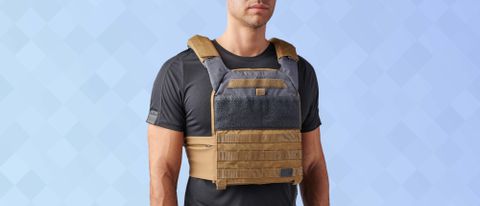

Training in military, police, and special forces requires a unique combination of physical fitness, mental toughness, and quick decision-making under pressure. For these professionals, maintaining peak physical condition is crucial for their roles, which often involve high-stakes scenarios that demand quick reactions, endurance, and strength. A weighted vest is an essential tool in their training routines, as it helps improve overall performance by adding resistance to regular exercises, simulating real-world challenges, and preparing them for the physical demands of their jobs.
This article will explore how military, police, and special forces personnel use weighted vests to enhance physical capabilities, improve endurance, and sharpen response times. We’ll also look at how this versatile piece of equipment aids in building functional strength and prepares individuals for the rigors of real-life operations.
How Weighted Vests Improve Military, Police, and Special Forces Training
- Building Functional Strength and Endurance
For military and law enforcement personnel, brute strength alone isn’t enough. They need functional strength—strength that translates to real-world tasks, such as carrying heavy gear, climbing obstacles, and maintaining stamina during long operations. Weighted vests are perfect for building this kind of strength, as they mimic the weight of tactical gear worn during operations, forcing the body to adapt to heavier loads.
- Mimicking Real-World Scenarios: Weighted vests simulate the heavy body armor, weapons, and equipment that military personnel and law enforcement officers carry in the field. By incorporating weighted vest traininginto daily workouts, trainees build strength in their core, back, shoulders, and legs, which helps them carry their tactical gear with more ease during real operations.
- Increasing Endurance: Carrying additional weight for extended periods challenges the cardiovascular system, improving endurance and stamina. Running drills, obstacle courses, and even walking with a weighted vest conditions the body to perform at high intensity for longer periods, critical for military missions and police operations.
- Enhancing Response Time and Agility
In combat or law enforcement scenarios, being able to react quickly and efficiently is often the difference between success and failure. A weighted vest helps sharpen reflexes and improve agility by making regular exercises more challenging, forcing trainees to move faster and more efficiently despite the added resistance.
- High-Intensity Interval Training (HIIT) with a Weighted Vest: HIIT exercises such as sprints, burpees, and shuttle runs are made more intense with a weighted vest. The extra resistance requires more energy and forces the body to move more efficiently, which in turn sharpens reaction times and enhances speed. This type of training is especially beneficial for police officers who need to chase down suspects or military personnel who need to navigate through rapidly changing environments.
- Combat Drills: Military and special forces often incorporate weighted vests into combat drills, such as simulating the weight of full body armor during hand-to-hand combat or tactical maneuvers. This not only builds physical strength but also enhances muscle memory, allowing for faster, more coordinated movements during real-life operations.
- Strengthening Core and Balance
Maintaining balance and core stability is crucial for professionals in law enforcement and the military. Whether it’s maintaining posture while carrying heavy gear or keeping balance during physically demanding situations, having a strong core is essential.
- Core-Centric Exercises: Wearing a weighted vest during core exercises such as planks, sit-ups, or mountain climbers increases the resistance, forcing the abdominal muscles and lower back to work harder. This helps military and police personnel build a strong, stable core, which is necessary for lifting heavy objects, engaging in physical confrontations, or operating in unpredictable terrain.
- Improving Balance and Stability: Weighted vests shift the body’s center of gravity, making exercises such as lunges, squats, and box jumps more difficult. For military and law enforcement personnel, improved balance and stability can make a significant difference in scenarios where maintaining control is critical, such as in fast-moving foot pursuits or combat situations.
- Increasing Cardiovascular Fitness and Stamina
For those in military, police, and special operations roles, cardiovascular fitness is non-negotiable. Tasks such as running, swimming, and endurance marches all require high levels of cardiovascular stamina. By adding a Zelus weighted vest to cardiovascular exercises, the body is forced to work harder, improving heart and lung capacity over time.
- Running with a Weighted Vest: Running is a staple in military and law enforcement training, and adding a weighted vest for runningsignificantly increases the intensity. The added resistance pushes the cardiovascular system to its limits, boosting endurance and overall fitness. This is especially beneficial for those preparing for endurance-based missions or operations that require covering long distances on foot.
- Marches and Hiking with a Weighted Vest: Military and special forces personnel frequently engage in long marches or rucks while carrying heavy loads. Practicing these activities with a weighted vesthelps simulate the weight of full gear and builds the stamina needed for long-distance treks. Over time, this training strengthens the legs, increases lung capacity, and conditions the body for sustained physical effort.
- Building Mental Toughness
In military and law enforcement roles, mental resilience is just as important as physical strength. The physical discomfort of wearing a weighted vest during strenuous activities pushes trainees out of their comfort zones, helping them build the mental toughness required for high-stress scenarios.
- Simulating Operational Stress: Military personnel and police officers often face physically and mentally exhausting situations, such as long patrols or combat missions. Training with a weighted vest helps build the endurance needed to stay sharp, focused, and effective, even under extreme stress.
- Overcoming Fatigue: Weighted vest training is physically demanding, and completing exercises while wearing additional weight requires determination and focus. This simulates the mental and physical fatigue experienced during real-life operations, training individuals to push through discomfort and maintain performance under pressure.
Incorporating Weighted Vests into Training Programs
To maximize the benefits of a weighted vest, it’s important to incorporate it into a variety of exercises and drills. Below are a few ideas on how to effectively use a weighted vest in military, police, and special forces training:
- Weighted Circuit Training: Combining strength exercises (e.g., push-ups, pull-ups, and squats) with high-intensity cardio (e.g., sprints and shuttle runs) while wearing a weighted vest provides a full-body workout that builds endurance, strength, and agility.
- Obstacle Course Drills: Completing obstacle courses while wearing a weighted vestsimulates the challenges of navigating difficult terrain in full gear, helping trainees improve their strength, balance, and problem-solving skills under pressure.
- Weighted Ruck Marches: Practice long-distance marches or hikes while wearing a weighted vest to condition the body for carrying heavy loads during extended operations.
- Tactical Combat Simulations: Incorporate a weighted vestinto tactical combat drills to simulate real-world conditions, allowing trainees to practice hand-to-hand combat, defensive maneuvers, and tactical movements while under the stress of additional weight.
Conclusion
For military, police, and special forces personnel, physical fitness is a vital component of success in the field. By incorporating a weighted vest into training routines, these professionals can enhance their strength, endurance, balance, and mental toughness, preparing them for the physical and mental demands of their roles. Whether running drills, combat simulations, or endurance marches, the weighted vest proves to be a valuable tool in developing the functional fitness needed for real-world operations.
With the right training and dedication, a weighted vest can significantly improve performance, helping military and law enforcement professionals meet the challenges of their demanding roles head-on.
Life Style
The First in Texas to Board Replica Rolex Pre-Owned Program
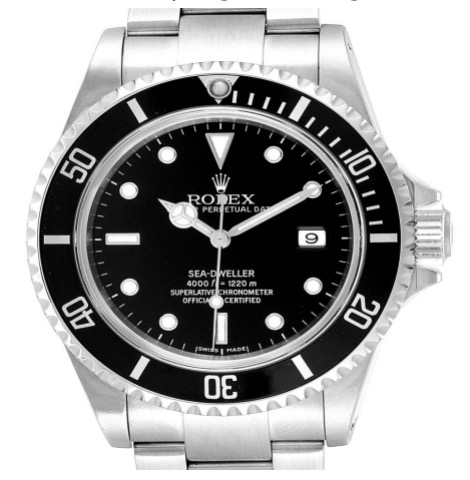

Eiseman Jewels has become one of the first Rolex retailers in the Dallas-Fort Worth area to offer the brand’s Certified Pre-Owned program both online and in-store. The 60-year-old family business, which has retailed replica Rolex watchs for over 30 years, launched the program this month, further solidifying its longstanding partnership with the prestigious brand.
“Eiseman Jewels is proud to further our relationship with Rolex by partnering with them to be among the first Official Rolex Jewelers in North Texas to offer their recently launched Certified Pre-Owned program in our NorthPark Center salon,” remarked CEO Richard Eiseman Jr. “As an Official Rolex Jeweler for 35 years, we embrace the brand’s vision of elevating the pre-owned experience to the same standards as acquiring a new Rolex watch.”
The Rolex Certified Pre-Owned program, launched in the U.S. in spring 2023, attests to the authenticity of pre-owned watches that are at least three years old at the time of resale by Localdlish. Each watch will have a Rolex Certified Pre-Owned seal attached and come with a two-year international warranty card, guaranteeing its proper functioning.
This initiative marks a significant step for Eiseman Jewels, which has been an official Rolex Jeweler since 1989, authorized to sell and care for both new and pre-owned Rolex watches. The program not only strengthens the retailer’s relationship with Rolex but also enhances the customer experience by ensuring the highest standards of quality and authenticity for pre-owned Rolex watches.
The inclusion of the replica Rolex Certified Pre-Owned program is expected to attract a wider audience of watch enthusiasts and collectors who value the assurance of authenticity and quality that comes with the Rolex seal. This move aligns with the growing trend of luxury brands offering certified pre-owned products, catering to a market that appreciates the heritage and craftsmanship of vintage watchs.
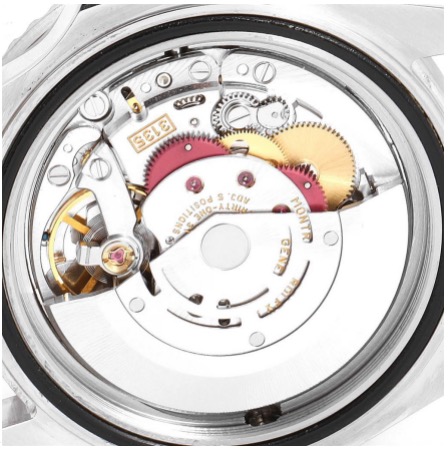

Richard Eiseman Jr. emphasized the importance of maintaining high standards in the pre-owned market, stating, “The Rolex Certified Pre-Owned program allows us to provide our customers with the same confidence and assurance they receive when purchasing a new Rolex. We are committed to offering an exceptional experience, whether our clients are buying a brand-new model or a certified pre-owned piece.”
The launch of the Rolex Certified Pre-Owned program at Eiseman Jewels underscores the retailer’s dedication to expanding its offerings and enhancing the customer experience. As one of the first in the Dallas-Fort Worth area to adopt this program, Eiseman Jewels continues to set the standard for luxury watch retail in North Texas.
Life Style
Shutterbug’s Paradise: Japan Photography Expedition Destinations
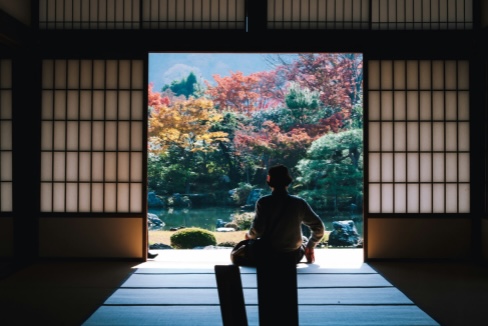

Greetings and welcome to the photographer’s paradise, where each frame captures a moment of beauty and each corner narrates a unique story. Japan, with its abundant natural beauty, historical significance, and cultural diversity, is an idyllic haven for photographers aspiring to capture the essence of the world. Japan, spanning from the vibrant thoroughfares of Tokyo to the tranquil scenery of Hokkaido, presents an innumerable array of photographic expedition locales ripe for exploration. There is an alluring sight for every photographer, be it the serene reflection of autumn foliage on a Kyoto pond or the vivid hues of springtime cherry blossoms. Furthermore, the utilization of eSIM for Japan has significantly simplified the process of traversing the varied landscape of Japan, enabling one to maintain connectivity in Japan and disseminate photographic experiences on a global scale. We cordially invite you to accompany us on an online exploration of the foremost photography expedition sites in Japan. With every action taken, we advance in our endeavor to faithfully capture the allure of this enchanting nation.
- Japan’s Appeal to Photographers
Japan entices photographers with its captivating fusion of modernity and tradition, providing an extensive array of subjects to be documented through the lens. Urban photography is boundlessly enhanced by the presence of vivacious street scenes and iconic landmarks in the center of bustling metropolises such as Tokyo. In the interim, the picturesque traditional tea houses and ancient temples of Kyoto provide a glimpse into the abundant cultural heritage of Japan, thereby motivating photographers to encapsulate the ambiance of the past. Japan’s natural aesthetics are evident in its picturesque coastlines, majestic mountains, and verdant forests, which extend beyond the urban landscape. Seasonally, photographs are presented with a distinct assortment of colors and textures, ranging from the vibrant tints of autumn leaves to the delicate petals of spring. Japan’s wide array of photogenic environments attracts a multitude of international photographers who are eager to discover its concealed marvels and impart their distinctive viewpoints to a global audience.
- Tokyo: The Pleasure of Urban Photography
Tokyo, the dynamic metropolis of Japan, serves as an ideal location for urban photographers to capture the lively dynamism of the city. Tokyo presents a wide range of photographic prospects in every direction, from the tranquil gardens of Meiji Shrine to the vibrant streets of Shibuya. Architectural photography can be inspired by the captivating ambiance of Tsukiji and Ameya-Yokocho markets, which offer insights into the city’s daily existence, in addition to the architectural splendor provided by renowned landmarks like the Tokyo Tower and Senso-ji Temple. The bustling alleyways of Shinjuku, as well as the stylish districts of Harajuku and Ginza, offer street photographers boundless prospects to encapsulate the unique ambiance of Tokyo’s eclectic culture. Tokyo, renowned for its exciting fusion of modernity and tradition, consistently serves as a source of inspiration for photographers seeking to explore the limits of their imagination and encapsulate the essence of Japanese urban existence.
- Kyoto: Gems of Cultural Photography
Japan’s ancient capital, Kyoto, offers photographers an abundance of cultural riches ripe for exploring. Kyoto, which is replete with more than 2,000 sanctuaries and temples, provides an abundance of opportunities to photograph the splendor of traditional Japanese landscapes and architecture. Historic landmarks in Kyoto, such as the renowned torii gates of Fushimi Inari Shrine and the golden pavilion of Kinkaku-ji, offer awe-inspiring settings for photographers desiring to immerse themselves in the profound cultural legacy of Japan. Kyoto’s serene gardens and picturesque bamboo woodlands, situated beyond the temples, present an idyllic ambiance and unspoiled splendor that are ideal for reflective landscape photography. Kyoto, renowned for its enduring allure and timeless beauty, is an ideal destination for photographers aiming to encapsulate the fundamental aspects of Japan’s spiritual heritage and cultural identity.
- Hokkaido: A Photographic Playground in Nature
Hokkaido, the northernmost territory in Japan, features some of the most magnificent natural landscapes in the nation, making it a photographer’s paradise. Hokkaido presents boundless possibilities for depicting the splendor of the natural environment, ranging from the rugged summits of the Daisetsuzan Mountains to the immaculate margins of Lake Shikotsu. Fields of wildflowers blossom in the spring, adorning the landscape with vivid hues that captivate the attention of photographers. As the foliage transforms from green to crimson, orange, and gold in the autumn, the forests become a mesmerizing setting for landscape photography. And during the winter, Hokkaido becomes a winter paradise, providing photographers with breathtaking subjects in the form of snow-covered landscapes and frozen cascades that capture the enchantment of the season. Hokkaido, a region situated in northern Japan, offers an ideal setting for nature photographers aiming to capture the unspoiled splendor of its pristine wilderness and breathtaking landscapes.
- Tropical Paradise Photography in Okinawa
The southernmost prefecture of Japan, Okinawa, is a tropical sanctuary that offers photographers an opportunity to discover a different aspect of Japan. Okinawa, with its verdant forests, white sand beaches, and azure waters, offers inexhaustible possibilities for depicting the splendor of the tropics. Landscape photographers can capture the rugged cliffs and dramatic seascapes that line the coast of Okinawa, while underwater photographers will be enthralled by the vibrant coral reefs and abundant marine life that flourish in the balmy waters of the island. Photographers aiming to encapsulate the essence of island life are further inspired by Okinawa’s distinctive history and culture, which extend beyond the island’s beaches. The vibrant cultural festivals and traditional Ryukyu architecture of Okinawa provide photographers with an abundance of subject matter to investigate and capture with their optics. Okinawa, a tropical sanctuary renowned for its serene ambiance and breathtaking natural landscapes, presents a singular and motivational setting for photographers aiming to encapsulate the fundamental qualities of the southernmost islands of Japan.
Conclusion
As our exploration of the photography expedition destinations in Japan draws to a close, we are once again struck by the abundance of captivating sights and experiences that this nation has to offer. Japan’s abundant cultural diversity and varied topography—from the vibrant streets of Tokyo to the tranquil landscapes of Hokkaido and the tropical utopia of Okinawa—offer photographers of all skill levels an inexhaustible supply of inspiration. There is something for every shutterbug to adore, whether it be the natural majesty of Hokkaido’s wilderness or the ancient temples and historic monuments of Kyoto. Furthermore, the utilization of eSIM by travelers has significantly simplified the process of traversing the varied landscapes of Japan, enabling photographers to maintain correspondence and disseminate their experiences globally. Consider undertaking a photography expedition to Japan, whether you are an experienced professional or an amateur aficionado, with the intention of documenting the captivating beauty and essence of this nation through your lens. Uncertainty surrounds the depths of what concealed treasures you may discover and the narratives your photographs may depict. It is a worthwhile journey that will provide you with cherished memories and inspiring images to ponder in the years to come.
-



 Biography6 years ago
Biography6 years agoJacqulyn Elizabeth Hanley is the Mother of Liza Soberano?
-



 Home5 years ago
Home5 years agoEpson L3110 Driver Free Download Latest Updated Version
-



 Games3 years ago
Games3 years agoBest Free To Play MMORPG To Try This 2021
-



 Biography5 years ago
Biography5 years agoAmanda Levy Mckeehan Biography, Family, Net Worth, Age, Affairs, Facts
-



 Biography5 years ago
Biography5 years agoWho is Rose Dorothy Dauriac? Scarlett Johansson Daughter?
-



 Biography5 years ago
Biography5 years agoJessica Ditzel Secret Information that Nobody Knows | Joe Rogan’s Wife
-



 Biography6 years ago
Biography6 years agoWhat is the relation of Nathaniel Larry Osorno with Liza Soberano?
-



 Anime5 years ago
Anime5 years agoOne Piece Filler | The Complete Guide and Updated List 2020



